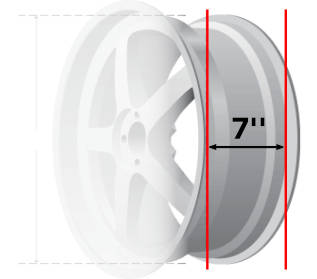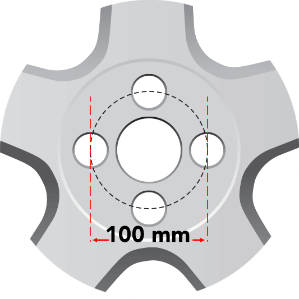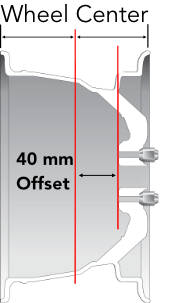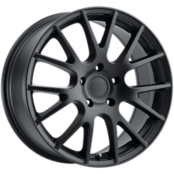Understanding Wheel Size
While how a wheel looks and feels is important, it's obviously pretty critical that it safely fits your ride too. That's why it's so important to understand wheel size
First, wheel sizes comprise the following dimensions: diameter, width, bolt pattern and offset. To make sure you get the right wheel size for your vehicle, it helps to have a basic understanding of these dimensions. So, what do these measurements mean?
To help explain the dimensions that make up wheel size, we'll break it down using the example wheel size below:
16x7 4-100 40
While that may look like just a string of numbers, it's actually giving you all the information you need to know about the rim size. Here's what those numbers mean:
Wheel Diameter: 16"
Wheel Width: 7"
Wheel Bolt Pattern: 4-100
Wheel Offset: +40mm
Now let's dive into each individual dimension to understand how those measurements impact you!
Wheel Diameter
Wheel or rim diameter is the distance measured in inches across the face of the wheel, from bead seat to bead seat. It's measured this way because that's where the tire and the wheel come together. In our example, the diameter is 16 inches. Wheel diameters can vary, but they typically range from 13"-24" (or higher for specialized low profile fitments).

Only wheels and tires of the same diameter can be safely mounted together, meaning you can only mount a 16" tire on a 16" wheel.
(PRO TIP: You can find your wheel’s diameter on the back side of the wheel, usually stamped on one of the spokes.)
Wheel Width
Wheel width is the distance, in inches, across the barrel of the wheel. Just like wheel diameter, rim width is measured from bead seat to bead seat, rather than from the rim flange. The width of the wheel in this example is 7 inches. The most common wheel widths vary from 6"-14".
When scoping out new rims, keep in mind that increasing or decreasing your wheel width can have a direct impact on your tire's contact patch, which will affect how your ride handles.

Wheel Bolt Pattern
One of the more complex dimensions is the bolt pattern. Made up of two numbers, the bolt pattern indicates how many bolt holes a wheel has, as well as the diameter of the imaginary circle those bolt holes create. In our example, 4-100, the wheel has 4 lug holes around a 100mm diameter circle. Keep in mind, the second number can be given in both inches and millimeters.
The most common wheel bolt patterns are 4 lug, 5 lug, 6 lug and 8 lug bolt patterns.

Your wheel's bolt pattern must exactly match your vehicle’s bolt pattern for a safe, successful tire/wheel installation.
Wheel Offset
The final dimension in this four dimensional world of wheels is: Wheel offset! The offset of your rims is the distance from the mounting surface of the wheel to the wheel's centerline, given in millimeters. In our example, the wheel offset is +40mm, meaning the mounting surface is 40mm away from the centerline of the wheel. Rim offset can be positive, zero or negative.
Getting offset right is essential for a couple reasons:
- First, the right offset prevents your wheels and tires from rubbing the brakes, fenders or suspension components.
- Second, offset also determines your wheel stance, changing whether they sit tucked in under the fenders or push out past them.

All of these measurements determine whether or not a particular wheel fits your vehicle. When shopping for new wheels, be sure that they’re compatible tires and your vehicle.
Need help finding the right wheels and tires for you? We’ve got you covered with a few easy-to-use online tools. Using Treadwell, you’ll get the top tire recommendations for your vehicle. And with our wheel visualizer, you can see how your favorite wheels look on your exact vehicle, including make, model and even OE paint color.
If you have any questions or require any assistance, stop by any of our America's Tire locations and we'll get you taken care of! Get a shorter wait time in-store when you buy and book online!

